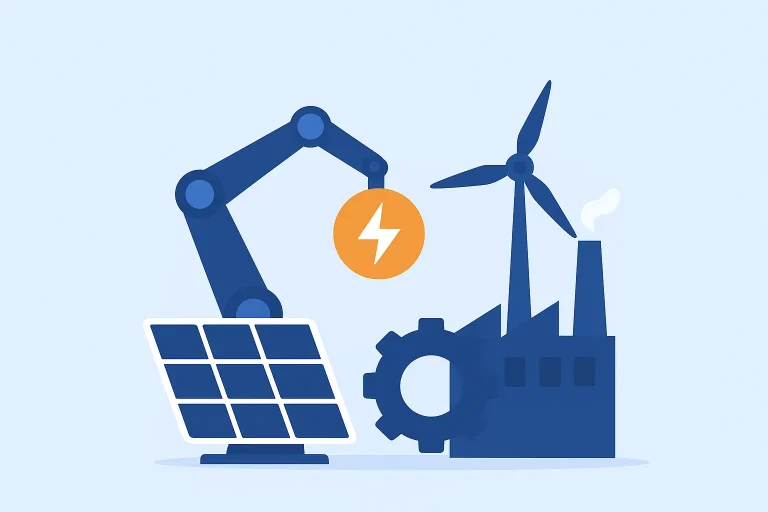Exploring Energy-Efficient Automation Solutions Trending Today
Energy-efficient automation is rapidly transforming industries, driving sustainability, and cutting operational costs. As businesses seek smarter ways to optimize energy consumption without compromising productivity, innovative automation solutions have become a cornerstone of modern industrial and commercial environments. This article delves into the latest trends in energy-efficient automation, highlighting how these technologies are reshaping workflows and contributing to a greener future.
Understanding Energy-Efficient Automation
At its core, energy-efficient automation refers to the integration of automated systems designed to minimize energy use while maximizing operational efficiency. This approach goes beyond simple energy-saving devices, incorporating intelligent controls, predictive analytics, and adaptive systems that adjust energy consumption dynamically based on real-time conditions.
These solutions encompass a broad range of applications, from smart lighting and HVAC systems in office buildings to automated manufacturing equipment and industrial control processes. By embedding energy efficiency into automation design, companies can reduce their carbon footprint, comply with increasingly stringent environmental regulations, and improve long-term financial performance.
Key Technologies Driving Energy-Efficient Automation
Several emerging technologies are making energy-efficient automation more accessible and impactful than ever before. Some of the standout innovations include:
1. Internet of Things (IoT) and Smart Sensors
IoT devices equipped with smart sensors collect detailed data on equipment performance, environmental conditions, and energy usage. This data is then analyzed to identify opportunities for reducing energy waste. For example, smart sensors can detect when rooms are unoccupied and automatically adjust lighting and climate controls accordingly, eliminating unnecessary power consumption.
2. Artificial Intelligence and Machine Learning
AI-powered automation systems can predict energy demand patterns, optimize scheduling, and adjust machine settings in real-time to enhance efficiency. Machine learning algorithms learn from historical data to continuously improve decision-making, enabling facilities to minimize peak energy usage and avoid costly surges.
3. Variable Frequency Drives (VFDs)
VFDs control the speed of electric motors according to the actual demand rather than running at full speed constantly. This technology is particularly useful in HVAC systems, pumps, and conveyors, where energy consumption can be significantly lowered by adjusting motor output, leading to major operational savings.
4. Energy Management Software
Comprehensive energy management platforms aggregate data from multiple sources and provide actionable insights through intuitive dashboards. These systems enable facility managers to track energy consumption trends, set automated controls, and generate reports to identify inefficiencies and benchmark performance.
Applications of Energy-Efficient Automation in Industry
Energy-efficient automation is making waves across various sectors, pushing the envelope on sustainability:
Manufacturing
By integrating automated controls with energy-efficient equipment, factories can streamline production lines, reduce idle times, and lower overall energy demand. Predictive maintenance powered by automation reduces machine downtime and energy losses associated with faulty equipment, contributing to leaner, greener operations.
Building Management
Smart building systems leverage automation to regulate lighting, heating, ventilation, and cooling precisely when and where needed. This proactive approach not only improves comfort for occupants but also significantly trims energy bills. Automated shading systems and smart windows further enhance energy savings by controlling heat gain and loss.
Agriculture
Automation in agriculture employs energy-efficient irrigation systems, climate-controlled greenhouses, and autonomous machinery. These innovations optimize resource usage, reduce water and power consumption, and increase crop yields sustainably.
Benefits of Adopting Energy-Efficient Automation
The advantages of integrating energy-efficient automation solutions are multifaceted:
- Cost Savings: Lower energy consumption translates directly into reduced utility bills and operational costs.
- Environmental Impact: Automation reduces carbon emissions and conserves natural resources.
- Enhanced Productivity: Automated monitoring and control enhance process reliability and reduce downtime.
- Regulatory Compliance: Businesses meet or exceed energy and environmental standards more easily.
- Competitive Advantage: Sustainability initiatives improve brand reputation and customer appeal.
Challenges and Future Outlook
While energy-efficient automation presents numerous benefits, certain challenges remain. Integration with legacy systems can be complex, and the upfront investment may deter smaller enterprises. Moreover, data security and system interoperability are ongoing concerns that require attention.
Looking ahead, the fusion of 5G connectivity, edge computing, and AI promises to unlock even greater potential in energy-efficient automation. As technology advances and costs decline, these solutions are expected to become standard across industries, driving a future where productivity and sustainability thrive hand in hand.
Conclusion
Energy-efficient automation is no longer a niche concept but a mainstream priority for businesses aiming to reduce energy usage while enhancing operational performance. From smart sensors to AI-driven analytics, the trending solutions available today are empowering organizations to make smarter, greener choices. Investing in these technologies not only supports global sustainability goals but also delivers tangible economic benefits, making energy-efficient automation a vital component of modern industrial strategy.




